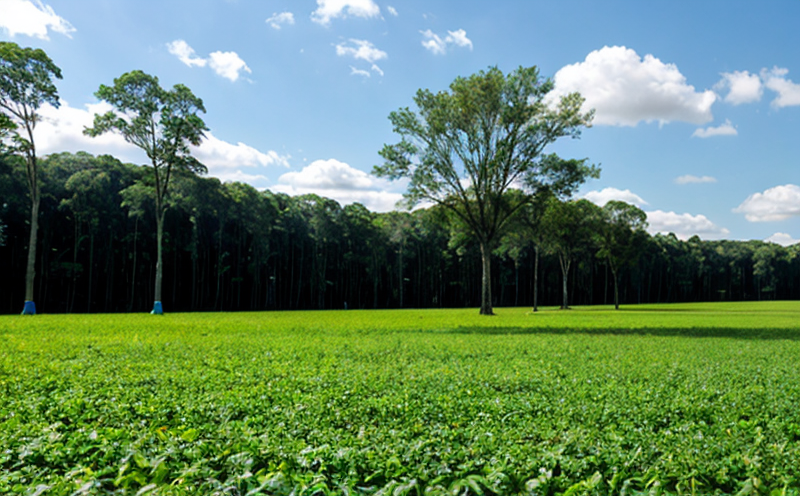Recycling Rate Testing of Consumer Product Packaging
The recycling rate testing of consumer product packaging is a critical aspect in ensuring that products meet environmental and sustainability standards. This test evaluates how effectively materials from packaging can be recycled, thereby reducing waste and promoting sustainable practices. The testing process involves analyzing the composition of different packaging types to determine their recyclability rates. It helps manufacturers understand which components are most suitable for recycling processes and aids in optimizing material choices.
The significance of this testing cannot be overstated, especially as global efforts towards sustainability continue to grow. Regulatory bodies worldwide are increasingly focusing on reducing waste through better design practices that enhance recyclability. By conducting thorough recycling rate tests, companies can ensure compliance with these regulations while also improving their environmental footprint. Additionally, accurate data from such tests provide valuable insights for research and development teams working on innovative packaging solutions.
Environmental concerns have led to stricter policies regarding the disposal of non-recyclable materials. Therefore, it is essential that businesses stay abreast of new developments in this area. Regularly updating testing protocols ensures continuous improvement in product design and production processes. Furthermore, these tests play a crucial role in fostering trust among consumers who increasingly prioritize eco-friendly options when making purchasing decisions.
In conclusion, recycling rate testing should be seen not just as an obligation but also as an opportunity to innovate and lead the way towards more sustainable practices within your industry.
Why Choose This Test
Selecting recycling rate testing for consumer product packaging is vital due to several key reasons. Firstly, it allows manufacturers to assess the potential of their products in terms of recyclability, which can significantly impact brand reputation and customer loyalty. Secondly, compliance with government regulations around waste management becomes easier when companies conduct these tests regularly. Thirdly, understanding recycling rates helps identify areas where improvements are needed within the supply chain, leading to better resource utilization.
Moreover, adopting this testing method enables businesses to stay ahead of market trends by incorporating feedback from consumers who demand greener alternatives. This proactive approach not only enhances competitiveness but also promotes long-term sustainability goals aligned with corporate social responsibility initiatives. Lastly, successful implementation of recycling rate tests demonstrates commitment to environmental stewardship, creating positive perceptions among stakeholders.
Given the increasing emphasis on sustainable practices across industries, choosing this test ensures that your organization remains adaptable and resilient in an ever-changing landscape characterized by rapid technological advancements and evolving consumer expectations.
Competitive Advantage and Market Impact
The implementation of recycling rate testing offers significant advantages for businesses operating within the consumer products sector. By conducting these tests, companies can gain valuable insights into their product designs' recyclability potential, enabling them to make informed decisions about material selection and packaging design. This strategic move fosters innovation by encouraging experimentation with new materials that are more easily recycled or composted.
Furthermore, embracing recycling rate testing demonstrates a company's dedication to environmental responsibility, potentially enhancing its image in the eyes of environmentally conscious consumers. Such positive perceptions can translate into increased market share and customer retention rates as eco-friendly preferences continue to grow among purchasing demographics. Companies that lead by example through sustainable practices often see higher sales figures compared to those lagging behind on this front.
Regulatory compliance is another crucial factor driving the adoption of recycling rate testing. As governments worldwide implement stricter laws governing waste reduction and resource efficiency, staying ahead of these changes can prevent costly fines and penalties for non-compliance. By proactively addressing recycling concerns through rigorous testing procedures, businesses position themselves favorably amidst evolving legislative environments.
Lastly, the competitive landscape is becoming increasingly competitive as sustainability becomes a key differentiator between brands. Early adoption of effective recycling practices positions companies not only to meet current standards but also to anticipate future requirements set by regulators and consumers alike. This foresight ensures long-term success in maintaining market leadership while contributing positively to society's overall well-being.
Use Cases and Application Examples
Incorporating recycling rate testing into your product development cycle offers numerous practical applications that extend beyond mere compliance requirements. For instance, when designing a new line of beverages packaged in plastic bottles, it is essential to understand the recyclability rates associated with different types of plastics used. Testing these materials helps identify which options are most favorable for recycling processes without compromising on quality or functionality.
Another example pertains to electronics manufacturers who seek sustainable alternatives for their product packaging. By analyzing various cardboard and paperboard combinations, they can optimize designs that maximize recyclability while ensuring robust protection during transit. This approach ensures that end-of-life products are easier to process in recycling facilities, reducing landfill contributions.
For textile producers, evaluating the biodegradability of fabrics alongside their overall recyclability provides valuable information regarding product lifecycle management strategies. Understanding how different fibers degrade under specific conditions allows for more informed decisions about sourcing materials and developing end-of-use solutions that minimize environmental impact.
Agricultural companies can also benefit from recycling rate testing by examining the compostability of packaging used in organic food products. This knowledge informs better practices regarding waste disposal methods, ensuring that biodegradable materials decompose safely without contaminating soil or water sources.
Overall, integrating comprehensive recycling rate tests into your operations provides a holistic view of product sustainability from raw material selection through to end-of-life considerations. Embracing this practice empowers businesses to contribute meaningfully towards global efforts aimed at reducing waste and promoting resource efficiency.





